Content
Buckfast is a breed of bees bred by crossing the genomes of English, Macedonian, Greek, Egyptian and Anatolian (Turkey). The selection line lasted 50 years. The result was a Buckfast breed.
Description of the breed
In England, at the turn of the 18th and 19th centuries, the population of local bees was practically destroyed by the tracheal mite. In the county of Devon, at Buckfast Abbey, the beekeeper monk Karl Carchre (brother Adam) noted that a cross between local bees and Italian bees survived the epidemic with partial losses. The monk began searching for genetic material in the Middle East, Europe and North Africa. As a result of many years of work, he bred a breed of bees with the same name of the abbey. The breed was productive, did not show aggressiveness, rarely swarmed, and had good immunity.
In beekeeping, the Buckfast bee breed occupies a priority place in breeding. The only drawback of the variety is poor tolerance of low temperatures by insects. This breed is not suitable for apiaries located in cold climates.
Characteristics of the buckfast bee:
Area | the original material of the bee in the wild has not been preserved; a few samples are kept in Germany at a specially equipped station, the purpose of which is to preserve the species of the English bee |
Weight | The average weight of a worker bee is within 120 mg, the weight of an unfertilized queen is about 195 g, ready for laying 215 g |
Appearance | slight hairiness mainly on the back of the buckfast, the belly on the underside is smooth without lint. The main background color is between brown and yellow, with obvious stripes below the back. The wings are light, transparent, in the sun with a dark beige tint. Feet are glossy black |
Proboscis size | medium length – 6.8 mm |
Behavior model | bees are not aggressive towards family members and others. When the lid is removed from the hive, they go deeper and rarely attack. You can work with your family without camouflage clothing. |
Winter hardiness | This is the weak side of the breed, the bees cannot prepare the hive for winter on their own, additional insulation is necessary on the part of the beekeeper. |
Honey collection process | floromigration in Buckfast bees is high, they do not give preference to one honey plant, they constantly fly from one species to another |
Level of oviposition of queens | The queen lays eggs continuously throughout the day, the average is about 2 thousand. |
A distinctive feature of buckfast bees from other varieties of bees is their body structure: it is flatter and more elongated. The color is darker, there is a yellow color, the paws are black; in other breeds they are brown. In a hive on a frame, movements are slow, unhurried, activity manifests itself when collecting nectar, so the breed is one of the most productive. It rarely stings, does not attack, and calmly coexists with humans.
What do buckfast uteri look like?
In the photo there is a buckfast queen, she is much larger than worker bees, the aircraft is less developed. It has a lighter color, a long abdomen, a light brown color, and a yellow tint that is much greater than that of working individuals. A young unfertilized individual is capable of flying out of the hive. During the reproduction process, the queen does not leave the hive and does not rise up. Does not leave the frame until it is completely filled.
Laying continues throughout the year. The queen bee buckfast builds a nest only on the lower tiers of the hive; the nest is small and compact. The reproductive process continues throughout the day, the queen lays up to 2 thousand eggs.
Get queen bee Buckfast from brood is quite difficult. Out of a thousand young individuals, about 20 will be used for breeding, preserving the genetic characteristics of the buckfast, and then with the condition that the drone will be purebred. Therefore, the price offer for bee packages with Buckfast is high. Breeding farms involved in breeding this breed are located only in Germany.
Buckfast breed lines with descriptions
The Buckfast breed includes a number of varieties, which are significantly smaller than other bee breeds. In terms of external characteristics, the subspecies are practically the same; they have different functional purposes.
Breed lines:
- For breeding work, B24,25,26 are used. The insects have fully preserved the genetic characteristics of the first representatives of the breed: productivity, lack of aggression, and a constant increase in the population. Both the female line (queens) and the male line (drones) are suitable for selection.
- In breeding work with B252, only drones are used; in the process, the immune system is adjusted, and resistance against diseases is introduced into the new offspring.
- Line B327 is not used to preserve the breed; these are neat working bees whose hive is always clean, the honeycombs are lined up in an even line, the cells are carefully sealed. Of all the subspecies, these are the most peaceful representatives.
- For industrial purposes, they use the A199 and B204, the distinctive feature of which is long-distance flights. Bees with high flora migration fly out early in the morning, not paying attention to weather conditions. Nepotism is strong; all adults raise brood.
- In subspecies P218 and P214, the Far Eastern bee is present in the genotype. These are the strongest representatives in terms of immunity and productivity, but also the most aggressive.
- The German line B75 is used commercially for the formation of bee packages and has all the characteristics of buckfast.
All Buckfast lines have in common: high reproduction, ability to work, early departures, calm behavior.
Distinctive characteristics of Buckfast bees
Buckfast bees differ from other breeds in a number of undeniable advantages:
- When working with bees, you do not need special equipment or camouflage clothing; the insects quietly go deep into the hive, do not interfere with the work of the beekeeper, and are non-aggressive.
- The breed does not leave empty cells on the combs; they are rationally filled with honey and brood.
- Backfast are neat, there is no excess propolis or foundation debris in the hives. Honeycombs with honey are never placed near frames with babies.
- They are demanding about the purity of the breed; if the drones are not purebred, the next generation will lose the characteristics characteristic of buckfasts.
- Buckfasts never swarm, are distinguished by early flights, and feel comfortable in foggy, damp weather, which is as close as possible to the climate of their historical homeland.
- The uterus has a high reproductive capacity.
- Over many years of work, the breed's immunity was brought to perfection; individuals are immune to almost all infections, except for the Varroa mite.
Disadvantages of Buckfast Bees
The species has few disadvantages, but they are quite serious. Bees cannot tolerate low temperatures. Experimental breeding of buckfast in northern climates, according to reviews, gave negative results. With good insulation, most of the family died. Therefore, the breed is not suitable for breeding in the north.
It is difficult to maintain the genetic purity of the species. The queen fully lays eggs for two years. In the third year, the clutch decreases significantly, which means honey productivity decreases. The old individual is replaced with a fertilized one. This is where the problems begin with the Buckfast breed. You can purchase a genetically pure queen only in Germany for a considerable sum.
Features of keeping buckfast bees
According to reviews from beekeepers with many years of experience, the Buckfast bee breed requires special attention when keeping and breeding. For full productivity, insects need to create special conditions that take into account the distinctive features characteristic of the Buckfast breed.
Bees create strong, numerous families; they need a large space; the more space and free frames in the hive, the larger the clutch. As the family grows, the hives are replaced with more spacious ones, and new empty frames are constantly substituted.
It is impossible to adjust the growth of the family, they are not divided, the brood is not removed, these actions will directly affect productivity.The swarm is intensified, the bees are fed backfast.
Wintering bees buckfast
When the temperature drops, the insects gather in a ball, choosing a place for wintering on the empty honeycombs from which they emerged. The central part is looser, extremely dense. Individuals periodically change places. This measure is necessary for heating and access to food. Insects need energy to raise the temperature in the hives to +300 C at the time of brood emergence.
This factor is taken into account before wintering; if necessary, the family is fed with syrup. Make sure that the hive is well insulated. After wintering buckfast on the street, in the spring at +120 The bees begin their flight. If the winter was successful, the hive will have frames with brood and no nosematosis.
Conclusion
Buckfast is a selective breed of bees with strong immunity against infectious and invasive infections. Characterized by high productivity and non-aggressive behavior. The breed is used for industrial honey production.
Buckfast bee reviews
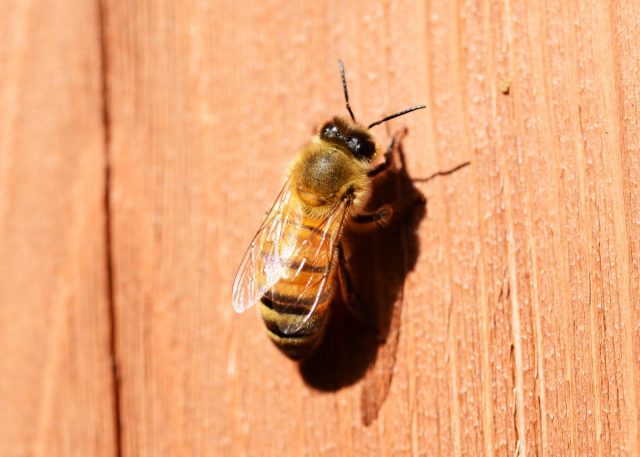
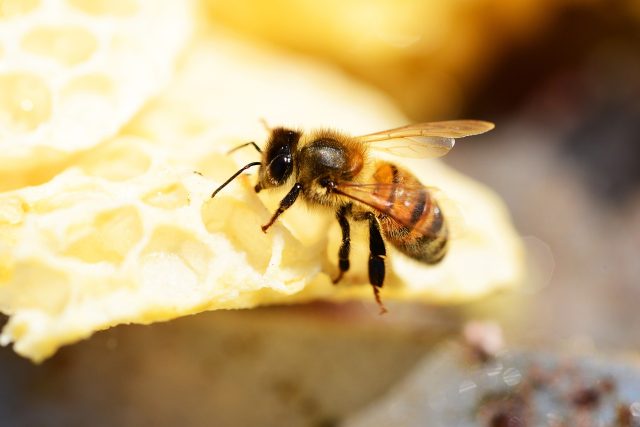
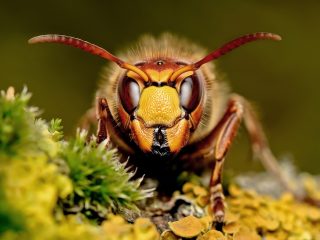
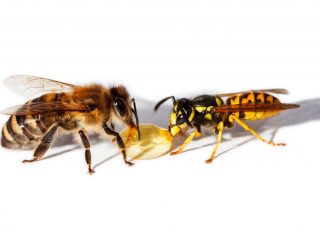
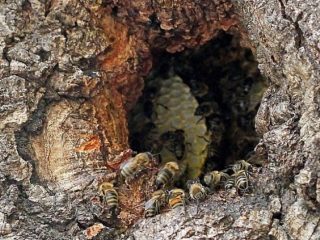
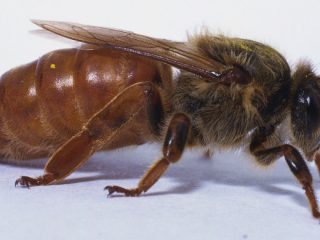


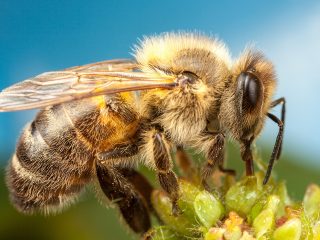
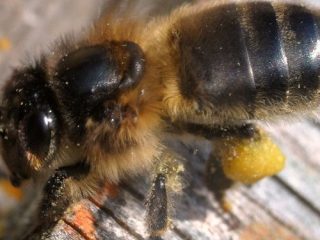
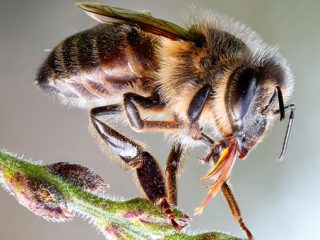
The photo is not a Buckfast queen, but a worker bee.